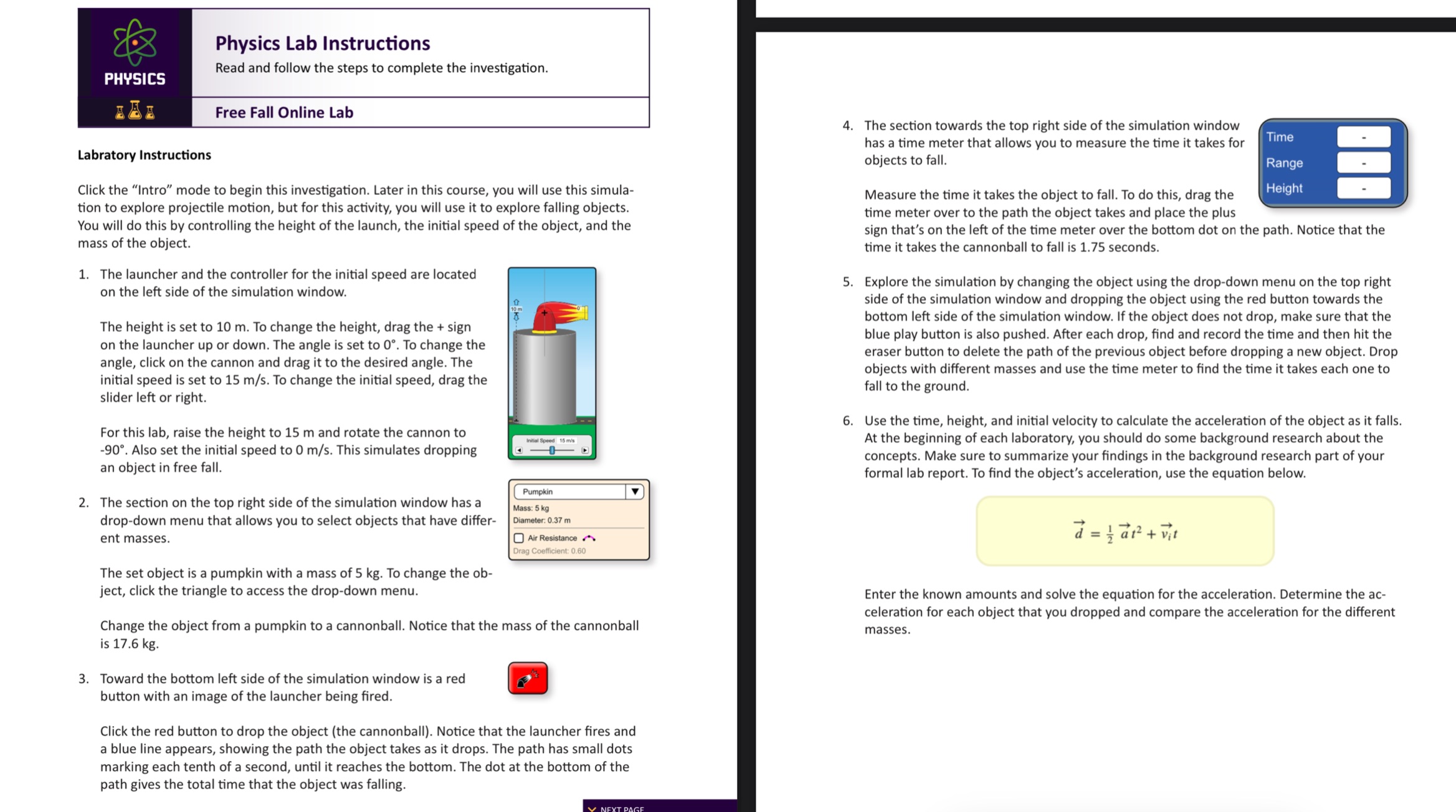Physics Lab Instructions Read and follow the steps to complete the investigation. Free Fall Online Lab Labratory Instructions Click the \"Intro" mode to begin this investigation. Later in this course, you will use this simula- tion to explore projectile motion, but for this activity, you will use it to explore falling objects. You will do this by controlling the height of the launch, the initial speed of the object, and the mass of the object, 1. The launcher and the controller for the initial speed are located on the left side of the simulation window. The height is set to 10 m. To change the height, drag the + sign on the launcher up or down. The angle is set to 0'. To change the angle, click on the cannon and drag it to the desired angle. The initial speed is set to 15 m/s. To change the initial speed, drag the slider left or right. For this lab, raise the height to 15 m and rotate the cannon to -90". Also set the initial speed to 0 m/s. This simulates dropping an object in free fail. Pumpkin M... 5kg drop-down menu that allows you to select objects that have differ- Bum-r 037m Z. The section on the top right Side of the simulation Window has a Brit masses. C] An Rilll'lnca A The set object is a pumpkin with a mass of 5 kg. To change the ob- ject, click the triangle to access the drop-down menu. Change the object from a pumpkin to a cannonball. Nance that the mass of the cannonball is 17.6 kg. 3. Toward the bottom left side of the simulation window is a red i button with an image of the launcher being red. Click the red button to drop the object (the cannonball). Notice that the launcher res and a blue line appears, showing the path the object takes as it drops, The path has small dots marking each tenth of a second, until it reaches the bottom, The dot at the bottom of the path gives the totai time that the object was falling. 4, The section towards the top right side of the simulation window has a time meterthat allows you to measure the time it takes for objects to fall. Measure the time it takes the object to fall. To do this, drag the time meter over to the path the object takes and place the plus sign that's on the left of the time meter over the bottom dot on the path. Notice that the time it takes the Cannonball to fall is 175 seconds. Explore the simuiation by changing the object using the drop-down menu on the top right side of the simulation window and dropping the object using the red button towards the bottom left side of the simulation window. If the object does not drop, make sure that the blue piay button is also pushed. After each drop, nd and record the time and then hit the eraser button to delete the path of the previous object before dropping a new object. Drop objects with different masses and use the time meter to nd the time it takes each one to fall to the ground. Use the time, height, and initial velocity to calculate the acceleration of the object as it falls. At the beginning of each laboratory, you should do some background research about the concepts. Make sure to summarize your ndings in the background research part of your formal lab report. To find the object's acceleration, use the equation below. _. (H v + I _. i', Enter the known amounts and solve the equation for the acceleration. Determine the ac- celeration for each object that you dropped and compare the acceleration for the different masses







